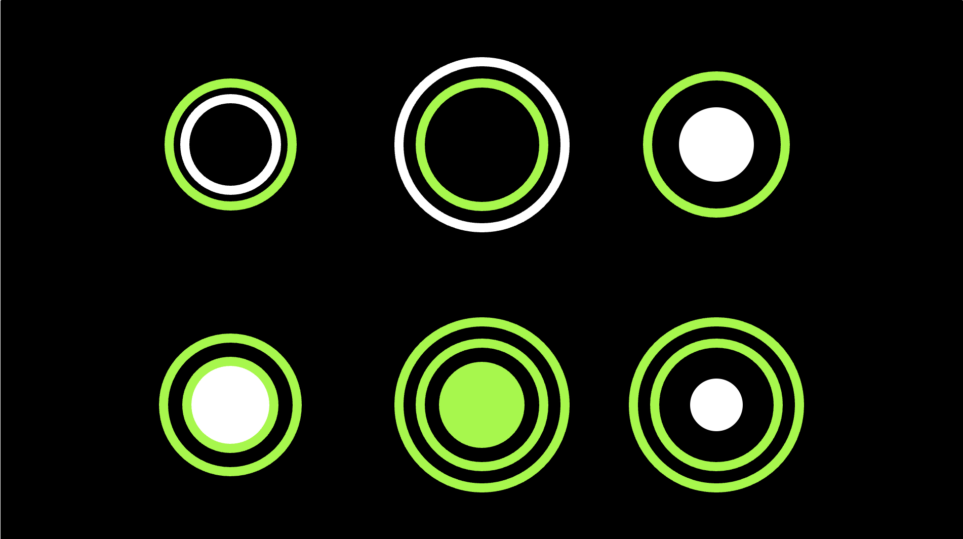Sustainability Branding
Green or sustainable?
“Sustainability” has evolved from a fashionable term into a tangible KPI. Many companies are therefore giving the topic a permanent place in their corporate and brand communication.
A minimum standard is the publication of a sustainability report, informing about waste separation at the plant, solar panels on the factory roof, reduction of employee parking spaces, purchase of CO2 emission certificates for business trips or flushing toilets with rainwater. Other companies complement their brand with green labels, or even change the brand color to green – while hoping to convey a connection to nature. However, measures that focus on marketing are quickly exposed as “greenwashing”. And the damage to the brand’s image is greater than the benefit to the company.
Dimensions of sustainability
Companies that are serious about sustainability demands of their customers, investors and employees take a much broader view of the principle of sustainability. Such companies allow sustainability to claim an inherent position within operations and strategy – without glancing at a favorable sustainability report. They also include many more sustainability aspects than environmental awareness. A comprehensive sustainability strategy ranges from structural social responsibility to a consistent focus on the development of sustainable products, a long-term strategy and sustainable business model, and projects and activities that contribute to improving the quality of life on planet earth. But how can a brand be burdened with such a comprehensive understanding of sustainability?
Do good – and talk about it
The top priority for positioning a “sustainability brand” is credibility. A company that wants to be perceived as sustainable must integrate the topic of sustainability into its everyday business on three levels:
Sustainable thinking
Development of a clear attitude towards sustainability, and definition of a sustainability strategy that is realistic for the company. The strategy is exemplified by top management; on this basis, a corporate culture geared to sustainability is built up and enforced.
Sustainable action
Consistent inclusion of sustainability aspects in every new product, every performance, every service. The sustainability dimensions defined in the strategy are both a briefing, and a benchmark.
Sustainable measurement
Review of actions and results along the defined attitude, and on the basis of comprehensible, long-term measurement series. This also includes transparent information on the findings and the measures derived for further optimization.
And then – only then – when these three levels have been credibly established, the brand comes into play. Now the core messages of the brand can be focused on the topic of sustainability and made physically present and emotionally tangible at all touch-points. This may also mean abandoning other messages, because the brand’s stakeholders have limited perception capacity, and too many messages dilute the sustainability focus of the refreshed brand story.
Beyond the question of how brands communicate sustainability, however, there is a far more exciting question: how can the brand itself contribute to sustainable business management?
Strong brands make companies more sustainable
Farsightedly managed, attractively positioned brands make companies adaptable, relevant and resilient. This means that innovative products and services can be continuously brought to market under a strong brand – without excessive marketing effort. Because customers and investors will trust a strong brand, even in times of rapid change. In this way, a strong brand not only secures current sales, but also – sustainably – future demand. Strong brands also are considered more attractive and preferred by customers. This preference for a well-managed brand is worth money: it enables the sustainable implementation of a price premium, and it leads to an increase in market share in the long term. The price premium also holds potential for a sustainable feedback effect: more resources can be allocated to the development of high-quality products due to the larger margins. High-quality products are therefore often also more sustainable products – made of durable materials, with a timeless design, and manufactured in a process that is well planned, from creation to recycling.
Sustainable brand management
A sustainably managed brand is convincing in three dimensions:
Sustainable strategy: The brand strategy is defined long term. and on the basis of the corporate strategy – from brand architecture, positioning and brand personality to a system-capable, easy-to-implement brand identity.
Sustainable communication: The brand sends out clear, authentic messages, tells a consistent story at all touch-points along a very long period of time – and keeps its promises at every single touch-point. The brand also has a lasting and appropriate presence. Strong brands make companies more sustainable.
Sustainable differentiation: The brand creates long-term relevance for customers, in all dimensions, from offering to positioning to communication. It ensures a differentiated, concise and inspiring perception, and it offers customers, investors and talent a clear choice.
This text was first published in Handelszeitung Special „Brands“, June 8, 2017











